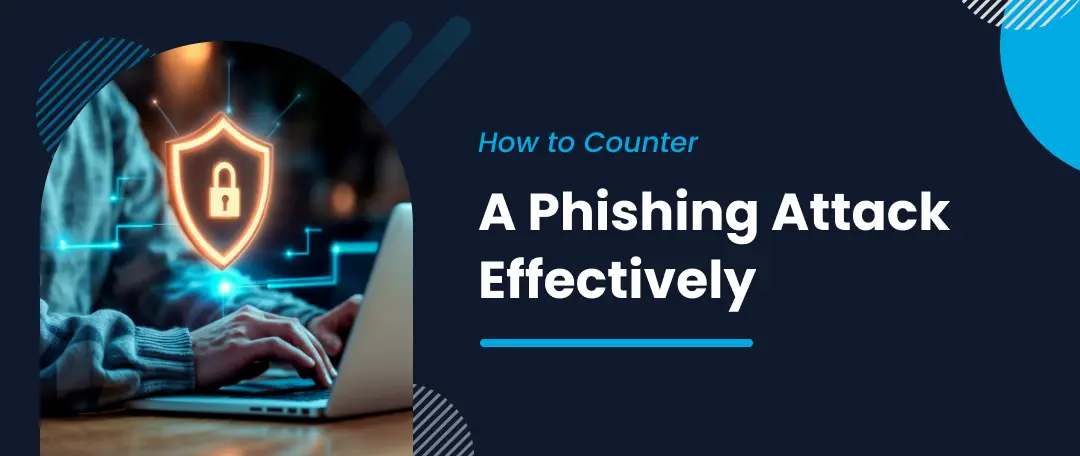If you’ve ever received an email from the “Prince of Nigeria” asking for urgent help — and it ends with someone losing money — you’re not alone. That kind of email is a classic phishing attempt. These attacks are designed to trick people into revealing sensitive information, clicking on malicious links, or downloading harmful files. But phishing doesn’t just affect individuals — it’s a growing threat for businesses, too. In fact, a recent study found that 64% of businesses experienced email phishing attacks in 2024, with each incident costing an average of $150,000. A common scenario: an employee receives a message from a supposed manager or coworker urging them to click a link or download a file. Within seconds, data is in the hands of an attacker. As an MSP, your clients rely on you to protect their business. That’s why it’s crucial to know how to counter a phishing attack — and train employees before it’s too late.
Here are some proven, effective ways to help your clients stay safe.
Effective Strategies to Counter a Phishing Attack Email
1. Train Employees Thoroughly
Even the strongest firewalls can’t stop an employee from clicking a bad link if they don’t recognize the danger. That’s why employee training is the most important step when learning how to counter a phishing attack.
At ClipTraining, we offer phishing simulation training that makes learning hands-on and engaging. With realistic email scenarios, employees learn to:
- Recognize Suspicious Emails: Even the most convincing phishing emails have red flags. Our training shows what to look for.
- Practice Safe Email Habits: Employees learn to pause before clicking, verify the sender, and avoid downloading unverified files.
- Report Phishing Attempts Quickly: Knowing how to spot and report threats helps IT teams respond faster and limit damage.
Simulation training not only boosts awareness but gives employees confidence — they know what to do when a phishing attempt lands in their inbox.
2. Use Multi-Factor Authentication (MFA)
MFA adds a layer of security beyond a password. When logging in, users must confirm their identity using a second method — like a code sent to their phone, a fingerprint, or a security question.
This makes it much harder for attackers to gain access, even if they’ve stolen a password. It’s a simple but powerful step your clients should take.
A systematic literature review highlights multi-factor authentication as one of the most effective defenses against phishing.
3. Implement Email Authentication Protocols for Phishing Attack
Email authentication standards help stop phishing emails before they hit inboxes. These include:
- SPF (Sender Policy Framework): Confirms emails come from authorized servers.
- DKIM (DomainKeys Identified Mail): Ensures the message hasn’t been tampered with and was sent by a valid sender.
- DMARC (Domain-based Message Authentication, Reporting & Conformance): Tells receiving servers how to handle messages that fail SPF or DKIM checks.
Together, these protocols strengthen your client’s email security and prevent impersonation.
4. Run Phishing Simulations Regularly
Understanding how to counter a phishing attack also means knowing how employees react under pressure.
ClipTraining’s simulated phishing tests help evaluate employee readiness. These exercises:
- Reveal weak points in your organization
- Highlight which teams need extra support
- Reinforce training through repetition
- Test the effectiveness of security tools already in place
Simulations give your clients a clear picture of their cyber readiness — and where to improve.
5. Strengthen Email Security with Filters
Advanced email filtering tools scan incoming messages for suspicious links, senders, or attachments — then block or quarantine them.
Filtering helps reduce the risk of human error by stopping harmful emails before they’re seen.
In addition, blocking access to known malicious websites helps prevent employees from unknowingly giving away sensitive information.
6. Use End-to-End Encryption
Even if an attacker manages to intercept a message, encryption keeps the data unreadable. End-to-end encryption ensures that only the intended recipient can view the contents.
It’s an essential safeguard for protecting financial data, internal communications, and customer information.
Final Thoughts: Help Your Clients Counter a Phishing Attack with Confidence
Phishing attacks happen every day — and any business, large or small, can be a target. But with the right strategies, your clients can stay one step ahead.
From simulation training to email filters and MFA, knowing how to counter a phishing attack is all about preparation and awareness.
At ClipTraining, we’re here to help. Our phishing simulations, employee education tools, and training modules are designed to build a smarter, safer workplace.
Book a demo with ClipTraining.com to learn more — we’d love to be part of your security journey.


